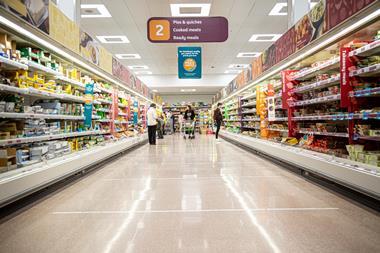Decisions are soon to be made in the Commission's inquiry. It's time to change the way buying power is assessed so we really find out what is happening to small stores
The Commission's working paper on supplier prices is a big step forward and reflects the extent of evidence gathered and analysis that has been undertaken. We have come a long way since January when the Commission published its Emerging Thinking, which stated it could not find a differential in buying prices between small and large retailers.
For us, this was counter-intuitive, not least because in the 2000 inquiry the Commission had reported an 11% differential. To its credit, the Commission has now gathered evidence of a 13% price differential. This is a landmark shift in its findings. We know small shops are at a disadvantage because of the pressure the large retailers can put on suppliers. This analysis is the first indication that the differential can be quantified.
The new evidence is just the start. ACS believes the buying power differential is just one part of the problem of buyer power. Using data collected, surveys conducted and analysis of compliance with the supermarket code of practice, the Commission can identify where the abuse of buyer power is taking place.
But here's the bad news as far as ACS is concerned. The Commission's paper on the entry and exit of small stores contains astonishing oversights. To understand how many stores are setting up and closing in the market, the Commission has used a data set called Experian Goad, which maps retail provision in retail centres and parks.
The paper found significant rates of decline in certain types of specialist retailers - fishmongers, butchers and bakers - but growth in others, including multiple and independent c- stores. This contradicts the IGD/Knowledge Store figures, published in The Grocer's Little Black Book, which show a decline of more than 4,000 independent c-stores since 2000.
The main concern is not that the Experian Goad data is wrong or that the Commission is misrepresenting the data it has collected. We have concerns if the Commission seeks to draw conclusions about the state of the convenience market that gives weight to this dataset over others.
This would be wrong because Experian Goad does not survey the areas where most c-stores trade - secondary areas, neighbourhoods, estates and villages. The dataset covers more than 3,000 stores - we know there are more than 50,000 c-stores. This sample would be credible if it were random or representative, but it isn't. It only covers shops located in certain centres, which, if anything, are atypical.
The ACS surveyed its local town Farnborough, Hampshire, as an example. Findings showed that Goad found five stores when in fact there are another 23 around the town. Goad maps ignore the majority of c-stores, which we believe would be the same for most towns.
This inquiry is about the whole grocery market. Goad data is not reliable because it ignores most convenience stores - and the regrettable decline of independent stores, which is observed by every industry commentator and operator that causes the loss of choice, true competition and diversity in local markets. And this is the issue at the heart of the inquiry and the issue that consumers really care about.
Decision time is fast approaching for the Commission and it has to get it right. The starting point is ensuring the facts are straight. We are confident they will identify the problems there are in the market and then act.n
James Lowman, chief executive, ACS














No comments yet